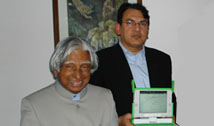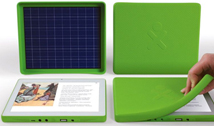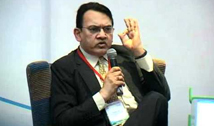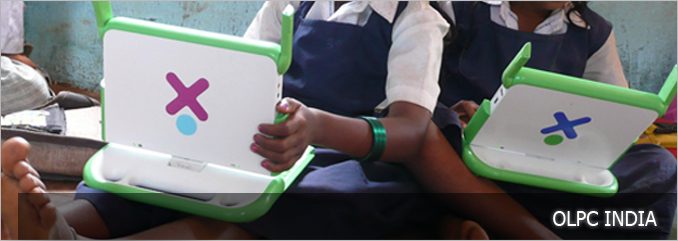
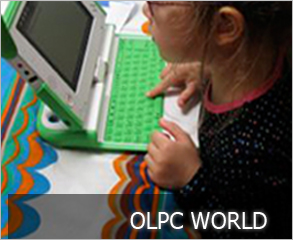

Nicholas Negroponte
Chairman

The affluent, technology driven Western world has often been exhorted for not making technologies that could help the underprivileged of the world.
Some leaders of the so called Third World, from among those who have come to appreciate of the challenges of developing new technologies, have used many fora to ask for the technology leaders to address the problem of the poor.
Prof Nicholas Negroponte is one of the very rare technology gurus of the world who listened and put together all his power to imagine what could help a billion children on the who have no hope to explore their potential in their lifetime. He realized that the challenges of learning were not easy to overcome and little had been done in as far as one could see to take on the challenge of learning for the poorest, those living in the remotest fringes- whether natural or manmade.
Over the years, his research into how people, in particular children, interface with new technologies, specifically computers, led him to find a way that tried to look at each and every challenge the poor faced in being schooled.
His research along with that of his several pioneering colleagues in technology and pedagogy, in particular Prof Seymour Papert's, underlined that children learn differently on-screen. If screen was their window to the world of learning, a child in the remotest part of teh world could start with an opportunity to leapfrog, begin learning "learning" and may develop the desired skills of critical thinking and problem solving that the world needed to end poverty as we have known it.
It took decades of work at MIT Media Lab that Prof Negroponte co-founded to come together and he set his mind to think of giving every child a screen to learn on. Powering it with human power if needed by cranking it, making it rugged to survive heat, moisture, dust and shock, making it flexible enough for a 4 year old child to own it like a toy, fun enough to be unputdownable, filled with all the applications that help learn the skills necessary to explore who these children may want to become, versatile enough to add anything the local environment preferred, advanced enough to be the leading edge in networking where no broadband existed.
Altogether, he imagined what seemed impossible and inspired people t find a solution to each of them, design something so unique it was considered one of the two best designed products of the last decade along with iPod and made it possible in a fraction of the cost that the world had come to accept as a given.
In doing so, he challenged the large vendors of computers to think afresh, triggered the netbooks phase of personal computing and designed a tablet well before iPad and other tablets became possible so that every child on the planet could afford to have one and learn with one.
His initial dream was to launch a $100 laptop when they typically cost $1000 or more. Launching OLPC helped the industry think of bringing down the cost of production and now laptops cost considerably less. The world has been talking about tablets at less than $100. However, a general purpose, well designed computer than engages a child and does not constrain learning is still not possible below almost twice the dream price.
OLPC laptops represent pinnacle of human achievement in taking technologies that markets cannot create and address the challenges of poverty.
Ironically, some leaders of the developing world are unable to see and procure solutions that are designed for them unless they follow the market logic because the vested interests in government procurement do not let democratic governments adopt what may solve a problem.
Professor Negroponte's vision is now helping a few million children in more than 50 countries and has the potential to transform the lives of children in the remotest part of the world beyond most of us may be able to imagine, now and for one dollar per week.


